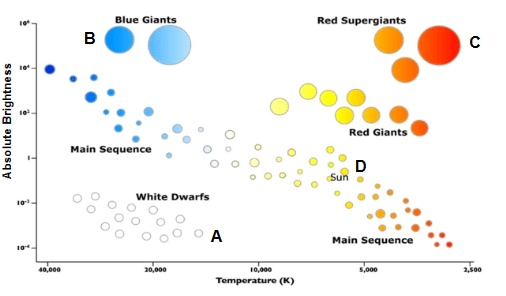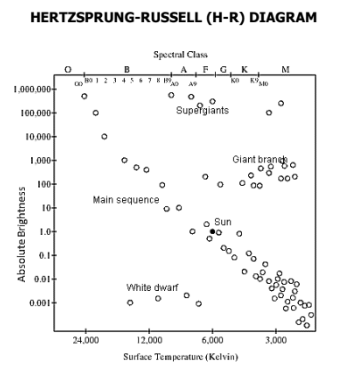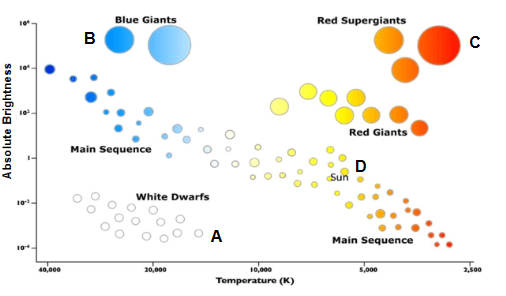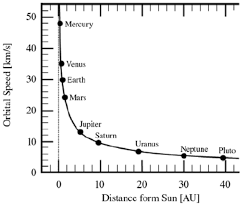The list of star colors in order of increasing temperature.
What is red, orange, yellow, white, blue?
Astronomers study objects as large as galaxies. Chemists study objects that can be as small as an atom. Even though scientists in each field study very different things, what do both astronomy and chemistry have in common?
A. Both fields use the same technology.
B. Both fields require the same basic knowledge.
C. Both fields use the same basic scientific methods.
D. Both fields are based on the same types of experiments.
C. Both fields use the same basic scientific methods.
This term is huge and is used when traveling long distances in space.
What is a light year (LY)?
Stars on the HR diagram are plotted on the graph based on these two properties.
What are surface temperature and absolute brightness?
I am made up of ice and dust.
What is a comet?
Astronomers often compare the colors of stars. Knowing the color of a star is most useful in determining…
An amateur astronomer noticed an object in the sky that could be explained as the discovery of a new comet. This is the most important step needed in an investigation of the object to make a scientifically valid conclusion.
A. detailed records of observations
B. new computer-controlled equipment
C. regular time allotments for observations
D. reference material of recent astronomical discoveries
What is A (detailed records of observations)?
I am used when traveling inside our solar system for relatively short distances.
What is an astronomical unit (AU)?
This grouping on the HR Diagram contains most of the stars.
What is Main Sequence?
List the following in order from biggest to smallest.
Earth, Sun, Jupiter, Moon
I am made up of gas and dust and have billions of stars on my spiral arms.
What is a galaxy?
Research on stars has advanced over the years. How has past research helped to advance scientific knowledge?
A. Scientists want to expand their knowledge based on their own work.
B. Scientists don't use research from the past.
C. Scientists love to use new ideas as long as it comes with individual recognition.
D. Scientists build on past research to increase their scientific knowledge.
D. Scientists build on past research to increase their scientific knowledge.
This is the most appropriate unit of astronomical distance to represent the distance between an Earth-orbiting space station and Neptune.
What is an astronomical unit (AU)?

This is how star B compares with star A.
A. Star B is hotter and brighter than star A.
B. Star B is cooler and brighter than star A.
C. Star A is hotter and brighter than star B.
D. Star A is cooler and brighter than star B
What is A (star B is hotter and brighter than star A)?
These two celestial objects are located the farthest apart.
A. Earth and the Sun
B. Earth and the Moon
C. A star in another solar system inside the Milky Way Galaxy
D. Earth and a planet in the Andromeda Galaxy
What is D (Earth and a planet in the Andromeda Galaxy)?
This does NOT change when the brightness of a star changes.
A. How far the star is from Earth.
B. The temperature of the star.
C. The color of the star.
D. How much heat the star’s core gives off.
What is A (how far the star is from Earth)?
This is the best way to find out how the Sun's solar flares affect the Earth.
A. Use a rocket to launch a satellite in space to look at the activity.
B. Look at the sun through a telescope to view the activity.
C. Make a computer model to monitor the activity.
D. Check radiation levels in the air and document it.
What is C (make a computer model to monitor the activity)?
This statement correctly describes a light-year and why scientists use it.
A. A light-year is the distance light travels in one year and is used to measure very small distances.
B. A light-year is the distance light travels in one year and is used to measure very large distances.
C. A light-year is the time it takes light to travel from the Sun to Earth and is used to measure very small distances.
D. A light-year is the time it takes light to travel from the Sun to Earth and is used to measure very large distances.
What is B (a light-year is the distance light travels in one year and is used to measure very large distances)?

This statement is true regarding white dwarf stars.
A. White dwarf stars have low surface temperatures and low absolute brightness.
B. White dwarf stars have low surface temperatures and high absolute brightness.
C. White dwarf stars have high surface temperatures and low absolute brightness.
D. White dwarf stars have high surface temperatures and high absolute brightness.
What is C (white dwarf stars have high surface temperatures and low absolute brightness)?
This is the time it takes for astronauts to travel to Mars.
A. Several days
B. Several months
C. Several years
D. Several hours
What is B (several months)?
The properties in which an astronomer would classify a newly discovered star.
What are absolute brightness, size, color (temperature), and apparent magnitude?
This is the importance of telescopes being able to be launched into outer space.
What is allowing scientists to discover information about the Universe that they haven't been able to discover before?
Sirius, the brightest star in the night sky, is about 8.6 light years away from Earth. This statement is correct based on this information.
A. It would take about 8.6 years for astronauts to travel to Sirius
B. Light from Sirius takes about 8.6 years to reach Earth.
C. Light from Sirius takes about 8.6 light years to reach Earth.
D. Light from Sirius takes about 8.6 billion years to reach Earth
What is C (light from Sirius takes about 8.6 light years to reach Earth)?

This is the best explanation for how star C compares to star A.
A. Star C is hotter and brighter than star A.
B. Star C is brighter and cooler than star A.
C. Star A is hotter and brighter than star C.
D. Star A is brighter and cooler than star C.
What is B (Star C is brighter and cooler than star A)?

This best explains this graph.
A. the smaller the planet, the further it is from the sun
B. the closer the planet is to the sun, the lower its orbital speed
C. the more distant the planet is from the sun, the lower its orbital speed
D. the bigger the planet, the more its orbital speed
What is C (the more distant the planet is from the sun, the lower its orbital speed)?